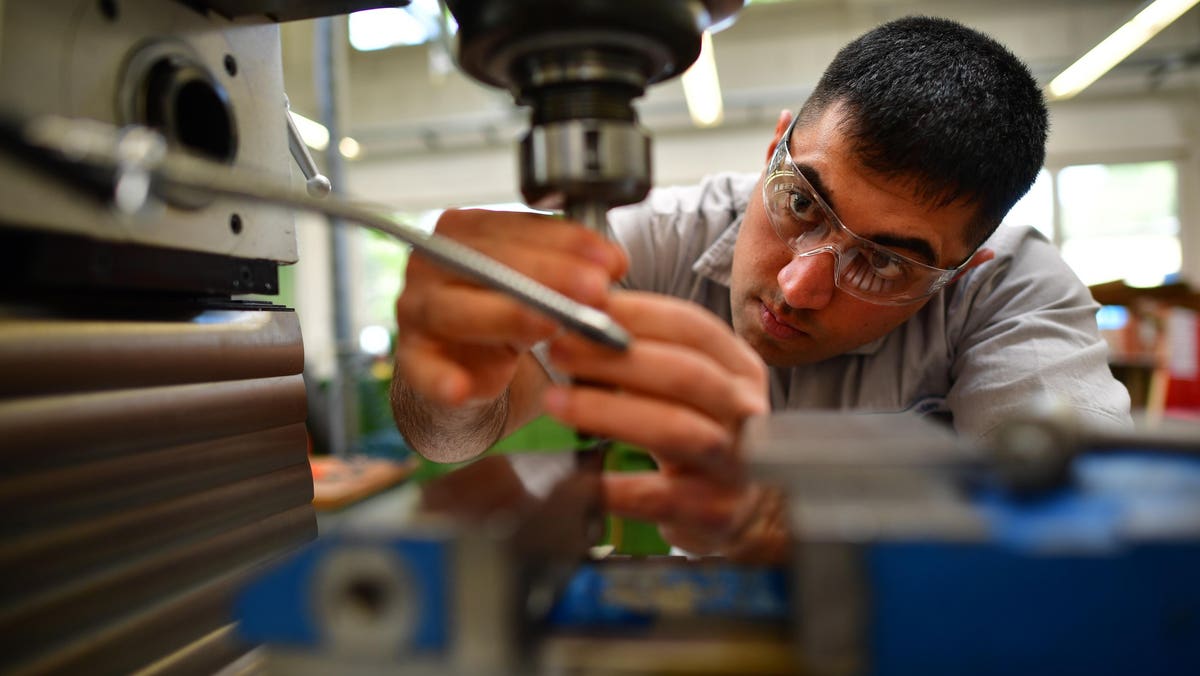(Ed. note: This is the second story in a series aimed at helping manufacturers successfully manage today’s multi-generational workplace.)
My generation tends to get a bad rap. You may know us as those dang avocado-toast-eating, selfie-taking Millennials. But soon—like it or not—you’ll also know us as the largest generation in the workforce.
The population dynamics may send a shiver up a few spines, but if you ask me, it’s no reason to fret. Millennials, of course, come with our own broad set of cultural traits and workplace preferences. We’re no doubt changing the culture of manufacturing. But we’re also beginning to take on high-ranking leadership roles—and an active part in shaping those very cultures.
Just ask Sully Sullivan, the 33-year-old President of DayGlo Color Corp. Or Ben Yost, the 33-year-old general manager of Yost Foods.
Sullivan and Yost are my peers in Millennial manufacturing leadership. They understand the challenges and have a unique perspective on the shifting generational tides. They’re changing the perception of Millennials with the work they do every day. I talked to each about the challenges they face—and about how they see their generation shifting the culture of the industry.
How Millennials Are Shaping the Manufacturing Workforce
Here’s the truth: Your average Millennial does not share the same view of manufacturing jobs as the generations that came before them.
In fact, one survey found that 86% of Baby Boomers and Gen X agreed that manufacturing jobs are important to the economy, compared to just 68% of Millennials. Meanwhile, only 49% of Millennials said manufacturing offers a fulfilling career, compared to 59% of Baby Boomers and Gen X.
Overcoming those hurdles requires manufacturers to examine their organizations and be willing to make changes. People over the age of 50, who make up 46% of associates at Sullivan’s DayGlo, won’t continue to dominate production. “There’s a succession cliff coming—especially as it relates to manual production labor,” he says.
To forge a sustainable path forward, Sullivan has been instituting some changes. DayGlo now allows flexible, remote work for administrative positions, and at the plant, some workers switched to four 10-hour shifts. That jives with what Millennials want; more than half desire a firm separation of work and leisure, a CBRE survey found. DayGlo has started offering continuous education and career trajectory planning, as well, including tuition reimbursement and pay-for-skill benefits for operators. For all the talk about Millennials being entitled, two-thirds consider a chance to learn a new skill a major factor in choosing a new job, and many are willing to do so outside the confines of their 9-to-5, CBRE found.
DayGlo has even made some alterations to the aesthetic, putting money into fixing floors and ceilings, painting, replacing vanities, and fixing plumbing issues in the breakrooms and locker rooms. “This was not an environment I wanted to show up to work in every day,” Sullivan says. “So, I couldn’t expect the folks that work for me to.”
Yost thinks about the cultural fabric of his company often, and how much of it boils down to communication. As a manager, he’s constantly trying to ensure his workforce—which actually ranges young, with most production employees between 24 and 36—understands the mission and how their position connects. “You can say, ‘Hey, it’s your job, so do it,’” Yost says. “Or you can explain the whole scope of things. And tell your teams, hey, this might not seem logical, but here’s why in the grand scheme of things it’s the right thing to do.”
And then there’s the factor that every prospect, regardless of age, takes into account: pay. And it’s helped Yost reach the younger crowd.
“Base pay is significant,” he says. “We don’t assume this is some big happy family—you’re here for a paycheck. But then, after that, it’s making sure the environment is one that people want to be spending time in. That it’s fulfilling and enjoyable.”
The Challenges for Millennial Leaders
To older generations, Yost’s explanations about the purpose of his team members’ jobs may come off like he’s treating them with kid gloves. But his younger workers have fully bought into the “why” behind the “what.”
And it’s that dichotomy that Millennial leaders try to navigate every day, whether interfacing with older board members or managing their shop floor teams.
Sullivan’s VP of research and development is a 40-year veteran of the industry, a guy who Sullivan calls “probably the foremost fluorescent chemistry scientist in the world.” That’s the sort of experience that can make you second guess yourself during conversations. “There’s nothing he doesn’t know about fluorescent chemistry that I can tell him,” Sullivan says. “But the flip side is that my experience working in different operations brings a perspective on our industry that he might not have.”
Sullivan says it’s vital that younger leadership learns to trust their knowledge and training. “It’s hard to look somebody dead in the face and change their opinion when they’ve been doing it longer than you’ve been alive,” he says. “So, you have to ground yourself in the fact that everybody deals with imposter syndrome. You need conviction and confidence in your beliefs.”
We certainly need confident young leaders if we’re to overcome the challenges that are holding back manufacturing. Millennials will play an enormous part in the industry’s future, not only as the workers that fill our shop floors but as the leaders who bridge the gap between an older workforce and traditional culture and a younger set of prospects whose priorities in a career often look much different.
I might be biased, but given time, I think we’ll be just fine.
Read the full article here





